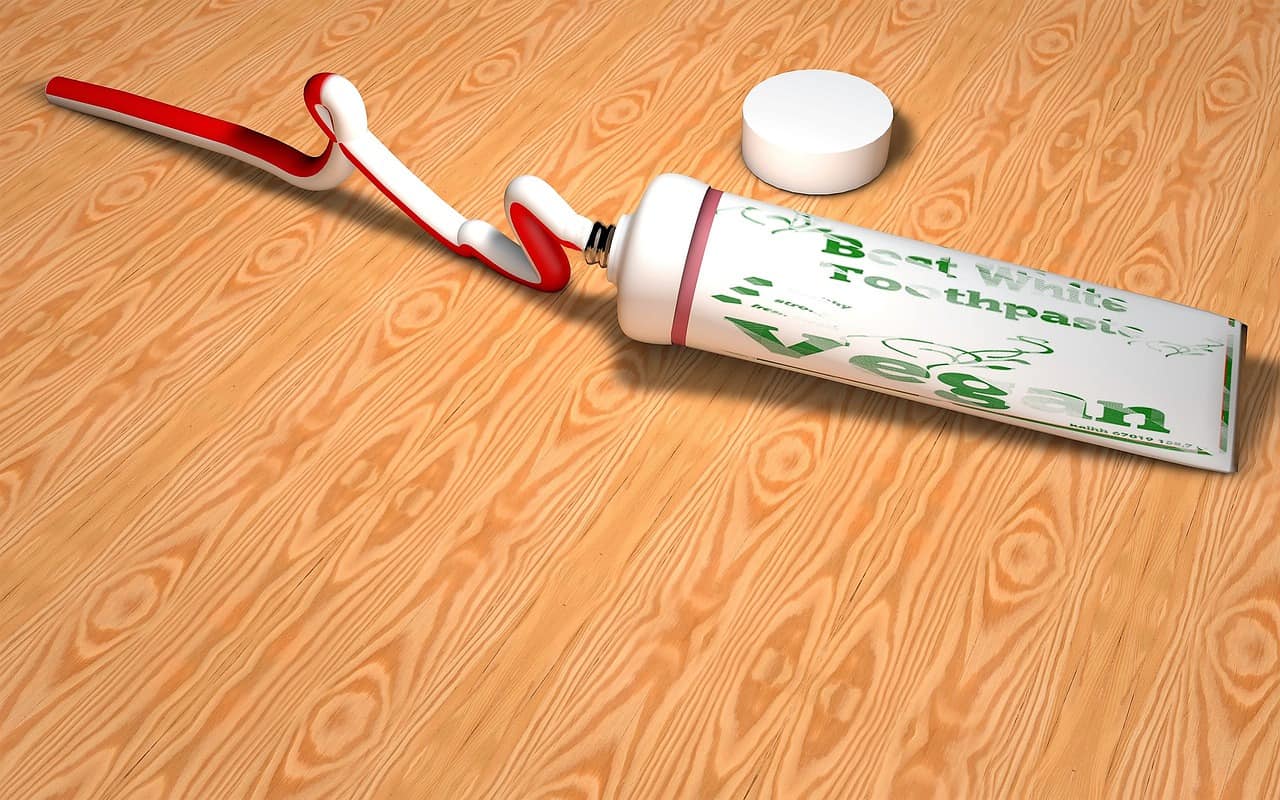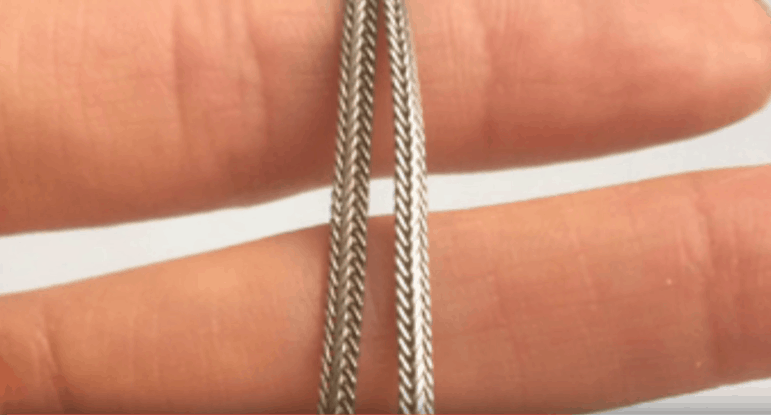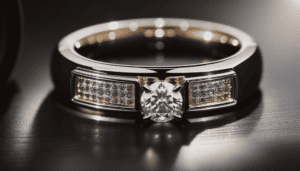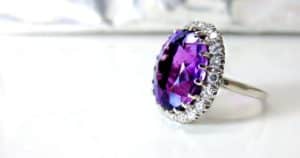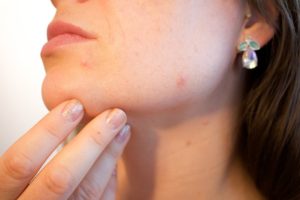When it comes to cleaning jewelry at home, no other item of daily use is more recommended than the good old toothpaste. Toothpaste is something that is easily available in our toiletries supply, and it’s just a no brainer to work with. But, just think, is it even safe to clean your jewelry with toothpaste?
Can toothpaste be used to clean jewelry?
Yes, cleaning jewelry with toothpaste is a great way to remove tarnish from jewelry, really fast. However be mindful to use this quick hack only to clean inexpensive imitation or less expensive silver jewelry. You absolutely should not use toothpaste on pearls because the cleaning and abrasive agents in the toothpaste can react with the calcium content of the pearls and deteriorate them.
You must also be careful and use the softest brush and apply minimal pressure as you surely do not want to cause damage to the outer layer or plating of the metal.
I have tried to dissect the proposition of cleaning jewelry with toothpaste, what’s recommended , and what I have learnt as a practitioner. This post will cover all that I have learnt in this regard, and will set you up to decide if it will be safe for you to clean your jewelry pieces using toothpaste.
How does toothpaste remove oxidation or tarnish from jewelry?
When you look at any substance, natural or laboratory manufactured, there are two properties that decide its effectiveness as a cleaning agent. These are the source of the cleaning properties in this substance, and the source of the abrasive properties. While the cleaning constituents act on the dirt chemically, the abrasive substances skiff this dirt off the surface to be cleaned.
So, it is best to judge toothpaste on these two aspects as well.
JEWELRY CLEANING PROPERTIES OF TOOTHPASTE
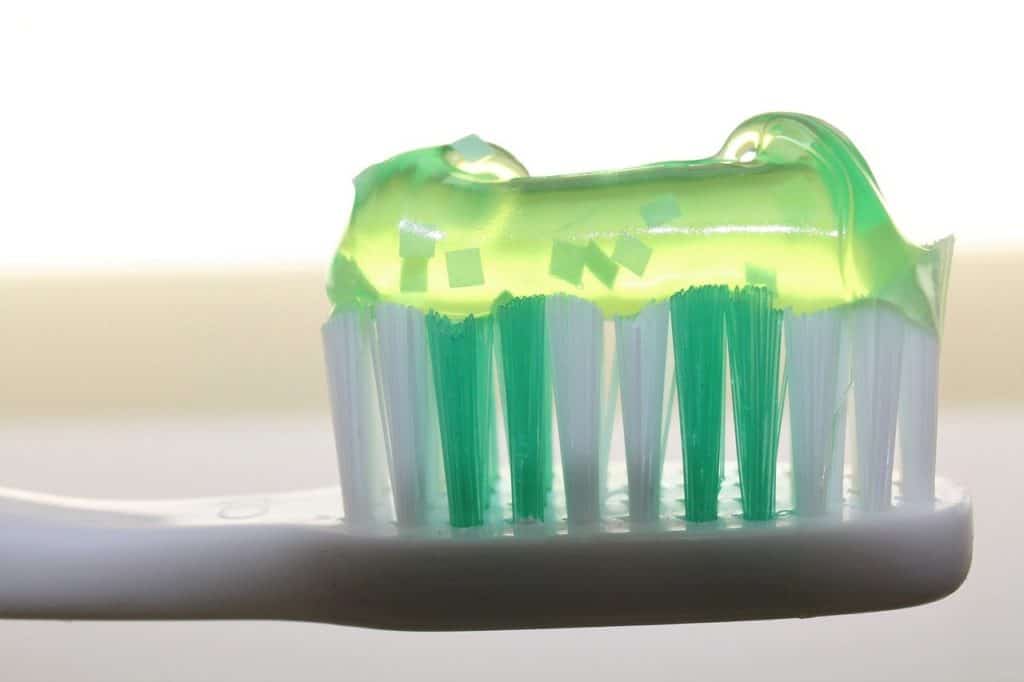
1. CLEANING AGENT
When it comes to using toothpaste to clean jewelry, you should be aware of the below two aspects about the toothpaste.
2. THE ABRASIVE
An abrasive is the component which creates the necessary obstruction and friction, in order to remove some of the hard sticking dirt particles from the object being cleaned. A toothpaste, originally meant to clean teeth composed of calcium, has Calcium Carbonate, hydrated silica and aluminium hydroxide as the major abrasives.
Why is abrasion important to look at ?
Abrasion is the extent to which a given surface can scratch another reference surface. When it comes to jewelry, abrasion can mean peeling, scratching and overall deterioration of your jewelry piece, and hence it is crucial to look at.
When using any substance on your jewelry, be it for cleaning , polishing or otherwise, you want to ensure that the measure of abrasion of the substance is lower than that of your jewelry piece. This is to ensure that the substance does not scratch or corrode your jewelry in any way.
MEASURING ABRASION OF JEWELRY CONSTITUENTS : The scientific unit for the measurement of abrasion is Mohs, and the Mohs scale ranges from 1 to 10 .Here, 1 corresponds to the softest abrasive(ie, talc) and 10 corresponds to the hardest one (diamond!).
Here is a measure of abrasion of some of the most common constituents of jewelry pieces.
| CONSTITUENT | MOHS ABRASION VALUE(Mohs Hardness) |
|---|---|
| Gold | 2.5 - 3 |
| Silver | 2.5 - 3 |
| Nickel | 4 |
| Copper | 8.5 |
| Diamond | 10 |
| Calcium Carbonate | 3 |
| Zirconia | 8 |
| Platinum | 3.5 |
(Compiled with inputs from READE)
MEASURING ABRASIVENESS OF TOOTHPASTES : Most toothpastes available in the market have a Mohs hardness of 3-4 Mohs. While a much more common measure of teh abrasiveness of a toothpaste is the RDA index. All toothpastes marketed are required to disclose their RDA index value, and this is a way we can select the best toothpaste.
The below website will give you more details about the RDA index value, and how the various brands of toothpastes fare on it.
https://www.bestdentistguide.com/non-abrasive-toothpaste/
Now that you are aware of how the toothpaste cleans surfaces in general, lets apply this knowledge to specific types of jewelry and see how toothpaste fares as a cleaning agent for each of these.
CLEANING SILVER JEWELRY WITH TOOTHPASTE
Does toothpaste remove silver tarnish?
Yes, toothpaste does remove silver tarnish. It contains micro-beads, in addition to other substances like calcium carbonate and hydrated silica that act as abrasive materials. Additionally, fluoride is present in most toothpastes and it works on reversing oxidation.
Therefore, Fluoride works as the cleaning constituent and micro-beads and hydrated silica work as abrasive agents.
Can you use toothpaste to clean sterling silver jewelry?
If used in the right fashion, using a toothpaste can prove to be perhaps the easiest way to clean and maintain sterling silver jewelry. Just about any gentle (non abrasive) toothpaste is ideal for most of silver earrings, bangles and nose pieces. However I have found that the motion of scrubbing while cleaning the jewelry piece with toothpaste goes a long way in ensuring that you do not scratch it while cleaning.
When applying the toothpaste on the silver jewelry piece and rubbing it, make sure that your motions are long and go back and forth in the direction of the grain of silver. Circular motions will only widen the scratches and make them all the more prominent.
CLEANING GOLD JEWELRY WITH TOOTHPASTE
Can you clean Gold using toothpaste?
Although the abrasion value for gold on the mohs scale is similar to that of silver, one must avoid cleaning gold with toothpaste. It can be used occasionally, but not often. Gold being more precious and expensive than silver, you would not want to lose even the slightest amount of metal as you clean. While targeting the outer layer, the abrasive agent may remove a little amount of the metal as well. You certainly do not want the weight of your jewelry to reduce over time.
Cleaning gold plated jewelry with toothpaste
Gold plated jewelry generally has a very thin coating of Gold over other base metals. If you are cleaning it with toothpaste, you have to be as gentle as you can in order to keep the outer gold plating safe from being chipped off. Use a toothpaste that is low on percentage composition of abrasive agents. Gently rub using a soft muslin cloth instead of a brush. When you rinse, you can use slightly warm water to remove excessive toothpaste instead of rubbing it hard.
I prefer using this cloth for cleaning most of my jewelry. You can check it out if you are looking forward to getting one for your pieces as well. What I like about it is the softness and the fact that it is reusable and you get many at once, so they last a really long time.
CLEANING DIAMOND JEWELRY WITH TOOTHPASTE
Can you clean Diamond Jewelry using toothpaste?
As far as diamond jewelry is concerned, avoid the use of toothpaste. It can scratch gold and other alloys used to carve the jewelry. If any part of the prong, or the structure holding the diamond is compromised, it might eventually cause the diamond to fall out. If you must, use a soft cloth instead of toothbrush as it causes minimal abrasion. Also, avoid using it under and around the area where the diamond is placed.
Use toothpaste only if you are cleaning a piece of diamond that is not carved into jewelry.
CLEANING GEMSTONES WITH TOOTHPASTE
Do not clean your gemstone jewelry using toothpaste. While only a few gemstones have hardness lesser than toothpaste on mohs hardness scale, it can still cause scratches at the surface. Use of toothpaste to clean gemstones may result in discolouration or cause the stone to lose its lustre. Primarily, pearl and opal should never be cleaned using toothpaste as use of toothpaste can completely scratch their outer layer.
HOW TO USE TOOTHPASTE TO CLEAN JEWELRY
Since toothpaste isn’t necessarily made to clean jewelry, I recommend that you be a bit cautious while using it. You should start with a ‘spot treatment’, wherein you follow the below procedure on a very small area on the chain or any other jewelry piece you want to clean.
This will tell you how the metal reacts to the toothpaste, and if the results are good, you can continue cleaning the entire jewelry piece using the toothpaste.
1. Start with the right toothpaste
Although just about any toothpaste would do, always use the ones with low content of abrasives such as Calcium carbonate, dehydrated silica and hydrated aluminium in them. The percentage contents of these ingredients are clearly listed by most brands available in the market and you can check these at the back of the pack.
I generally prefer to use gel based toothpastes, over the cream based ones as I have found that they contain relatively lower amount of abrasive. This helps me limit the abrasive damage on my jewelry.
How to choose a toothpaste to clean jewelry with?
I generally refer to the RDA chart from Authoritydental.org, who have a really authentic chart of how abrasive a toothpaste is. I did put in some initial effort finding the best resources, as it was my jewelry at stake. They actually go in to certify the abrasion properties of toothpaste brands, and that’s why I find them trustworthy.
2. Application and Rubbing
Apply the toothpaste in a thick layer on the chain or any other jewelry piece that you are trying to clean. Complement this with soft scrubbing using your hands or a soft cloth. I prefer not to scrub my jewelry pieces with a toothbrush, as you would see many people suggesting. This has historically left a lot of scratches on the plated faces of my jewelry pieces.
Let the toothpaste complete its cleaning action by leaving the toothpaste soaked jewelry on a clean cloth or paper.
In order to clean the intricate parts, instead of using a toothbrush, I use this soft makeup brush instead. I believe if it is gentle on the soft skin on your eyes, it is safe for your jewelry! Having one dedicated to your jewelry helps as we don’t want traces of makeup spoiling our cherished pieces. The tapered tip provides flexibility in working on different areas of intricacy.
3. Cleaning & Rinsing
Take a bowl of clean, luke warm water, and dip the jewelry piece into it, so as to remove the accumulated toothpaste. Again, do not scrub using rough scrubbers or toothpastes. The water and a soft cloth will be enough to remove all toothpaste from the jewelry piece. If you can use warm water, it will be much easier.
Conclusion
Toothpaste, as we have seen, may be an easily available cleaning agent in households, but may not be suitable for all types of jewelry. Always go for the mild flourine toothpastes to be safe. Another useful tip is to be easy with the rubbing, so as to minimize any abrasion damage to your jewelry pieces.
Happy to know about your experiences with cleaning jewelry with toothpastes, or any other such agents. Until next time, keep dazzling!

